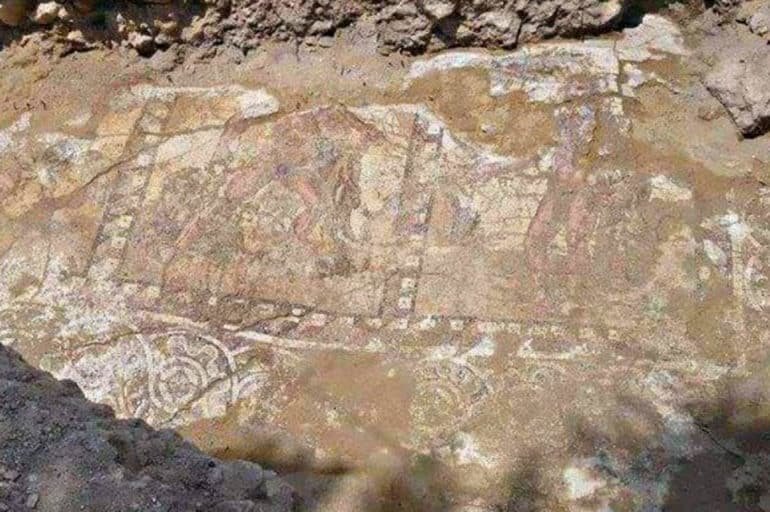The Cyprus Mail recently posted a nice write-up about the difficulties of uncovering ancient mosaics that I thought you might like to read. I've taken the relevant parts out of the post, which is interesting as a whole as well!
The Roman antiquities the article is about were unearthed while the Larnaca sewerage board was carrying out road works in the area, but it soon became clear that they could not be excavated further as a building was in the way. An uninhabited and abandoned house on the plot of land needs to be demolished before uncovering the antiquities can be completed. Only when the mosaic is completely revealed can the department of antiquities decide what to do with it, whether to leave it in situ or move it.
Greece is one example where moving a mosaic has been successfully managed when the mosaic of the Epiphany of Dionysus was moved to the local Archaeological Museum of Dion for restoration and protection between 2015 and 2017. The position and shape of individual mosaic stones were first recorded. The mosaic was then divided into several plates which could be transported and reassembled at its destination.
When winter is over, the stones will be uncovered little by little while the whole mosaic will be kept under the shelter. This way, the conservationists will clean and stabilise the stones bit by bit while the rest remain protected. Some of the stones are very well preserved, others are fragile, hence it is not clear how long the work will take.
Even when this part of the job is done, the area around needs to be carefully examined to establish what kind of building the mosaics were part of. Only when the work is finished will the site be opened to the public.
The Roman antiquities the article is about were unearthed while the Larnaca sewerage board was carrying out road works in the area, but it soon became clear that they could not be excavated further as a building was in the way. An uninhabited and abandoned house on the plot of land needs to be demolished before uncovering the antiquities can be completed. Only when the mosaic is completely revealed can the department of antiquities decide what to do with it, whether to leave it in situ or move it.
Greece is one example where moving a mosaic has been successfully managed when the mosaic of the Epiphany of Dionysus was moved to the local Archaeological Museum of Dion for restoration and protection between 2015 and 2017. The position and shape of individual mosaic stones were first recorded. The mosaic was then divided into several plates which could be transported and reassembled at its destination.
When winter is over, the stones will be uncovered little by little while the whole mosaic will be kept under the shelter. This way, the conservationists will clean and stabilise the stones bit by bit while the rest remain protected. Some of the stones are very well preserved, others are fragile, hence it is not clear how long the work will take.
Even when this part of the job is done, the area around needs to be carefully examined to establish what kind of building the mosaics were part of. Only when the work is finished will the site be opened to the public.

 Khaire! Would you buy me a coffee?
Khaire! Would you buy me a coffee?
No comments:
Post a Comment